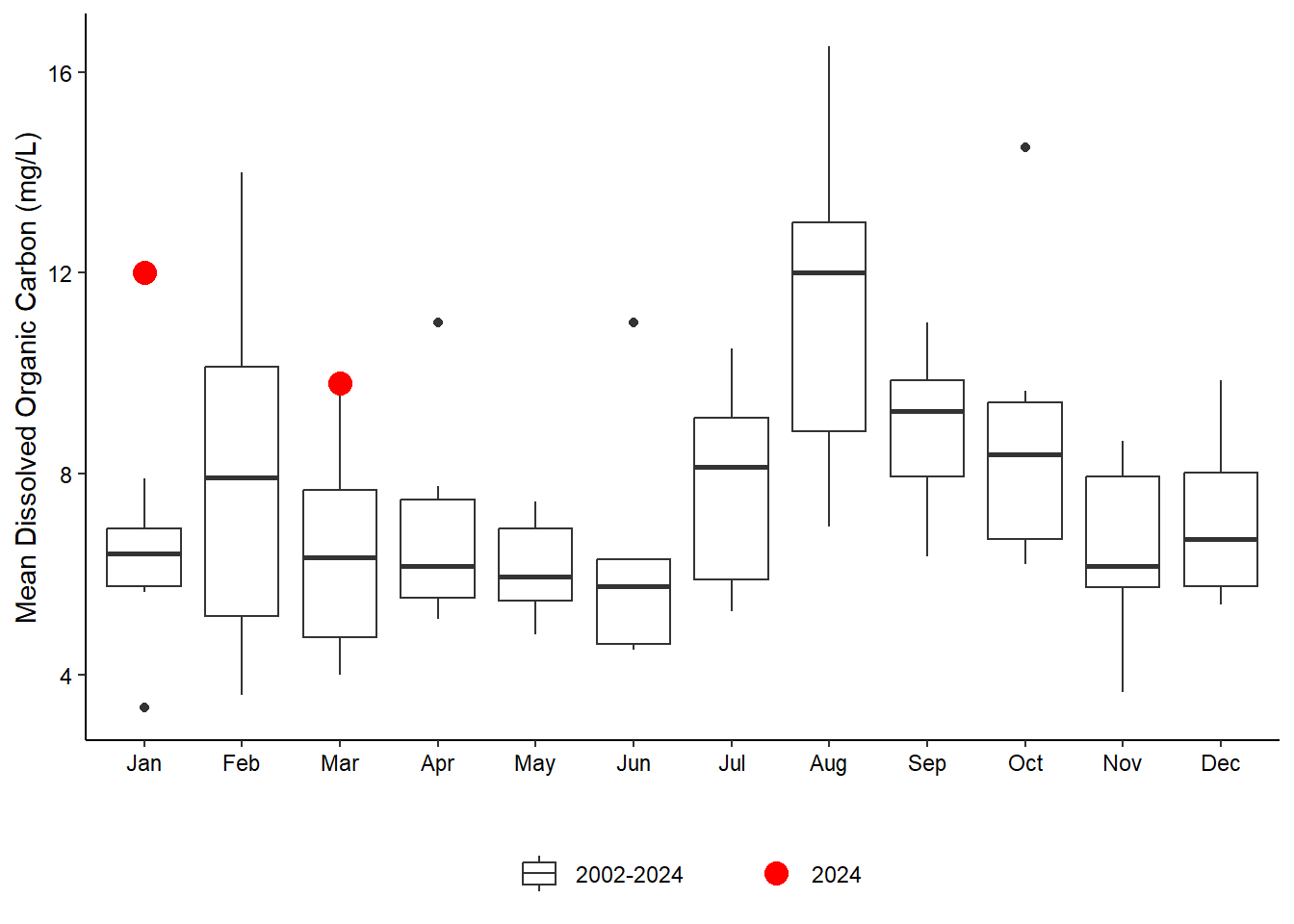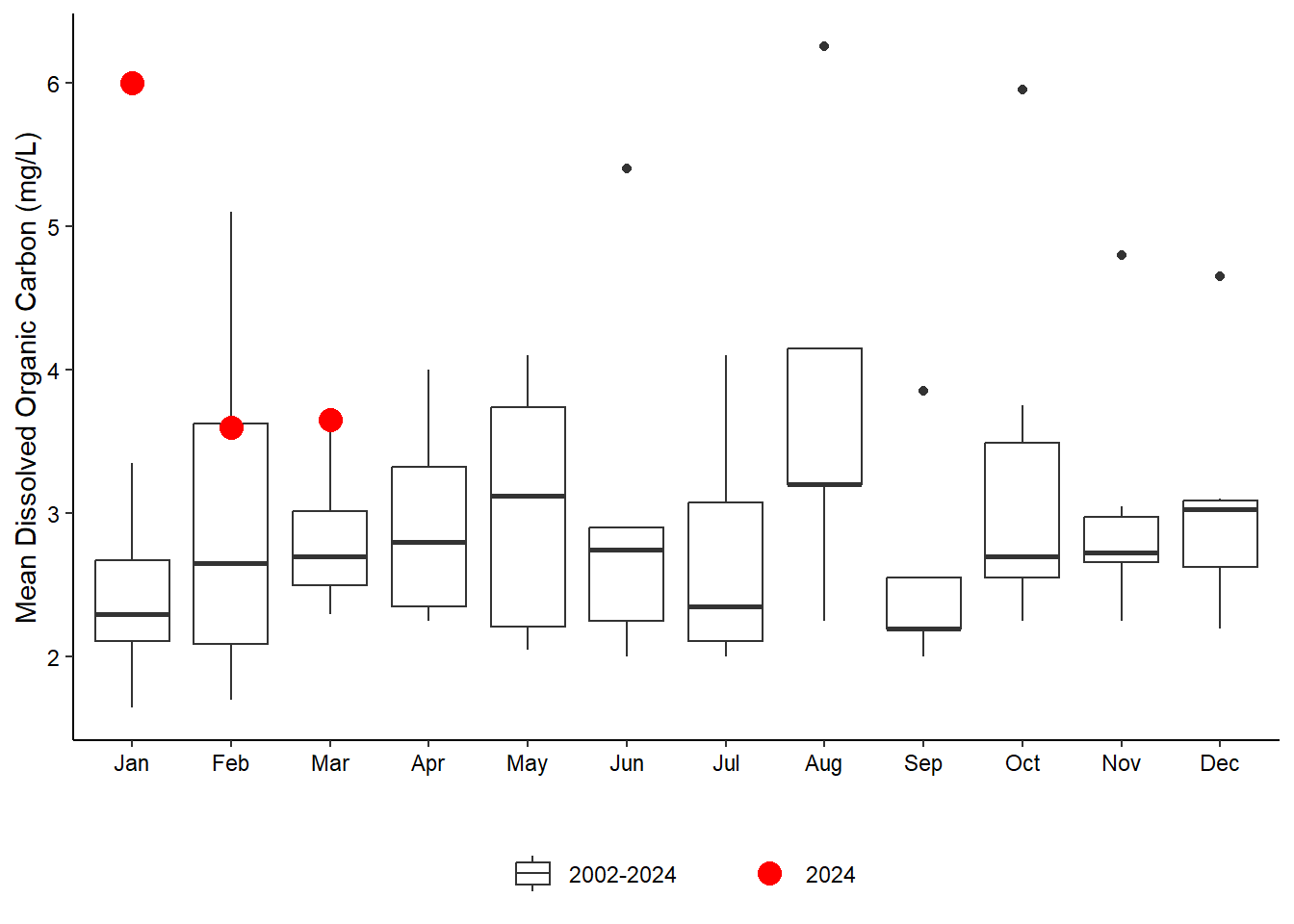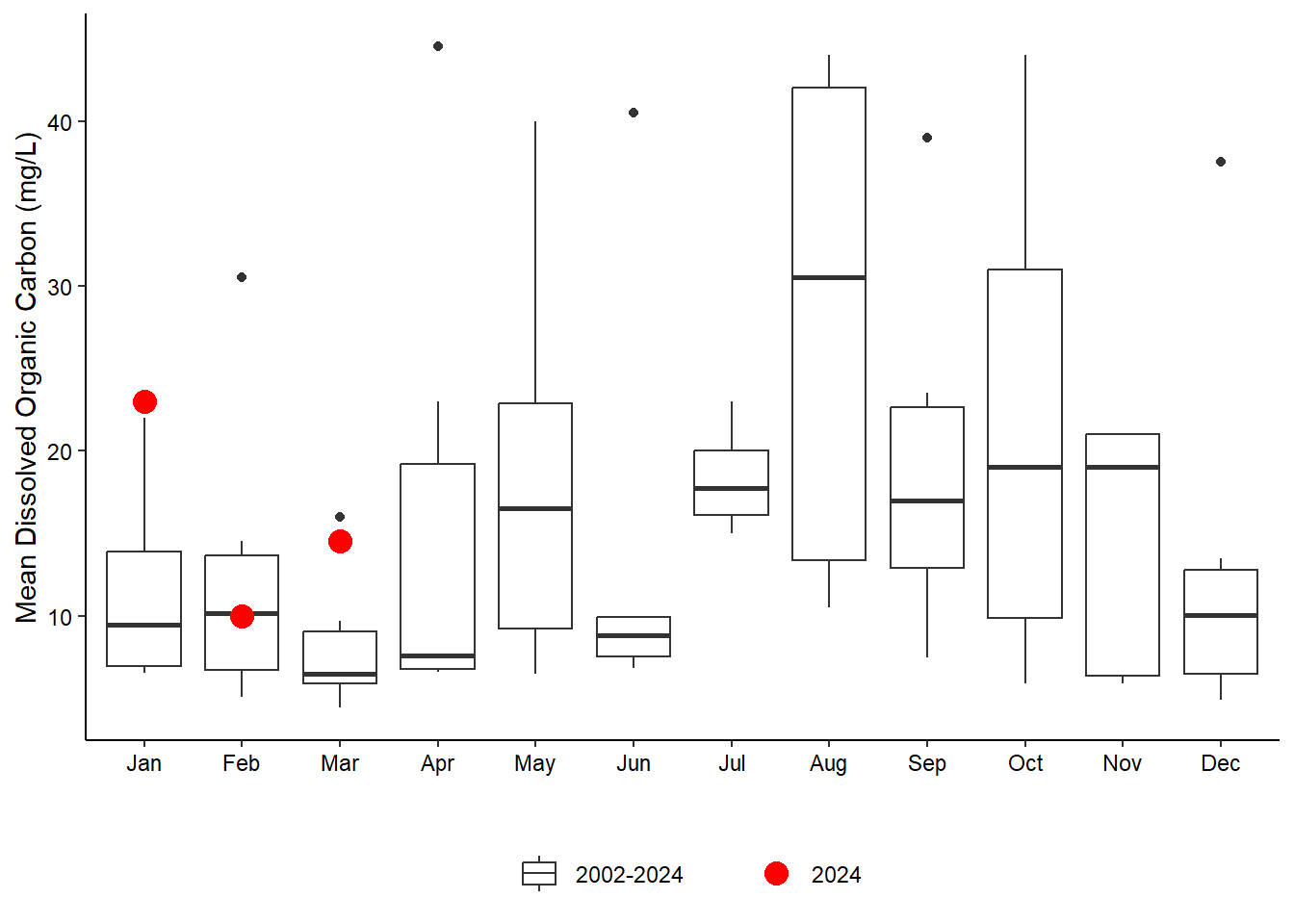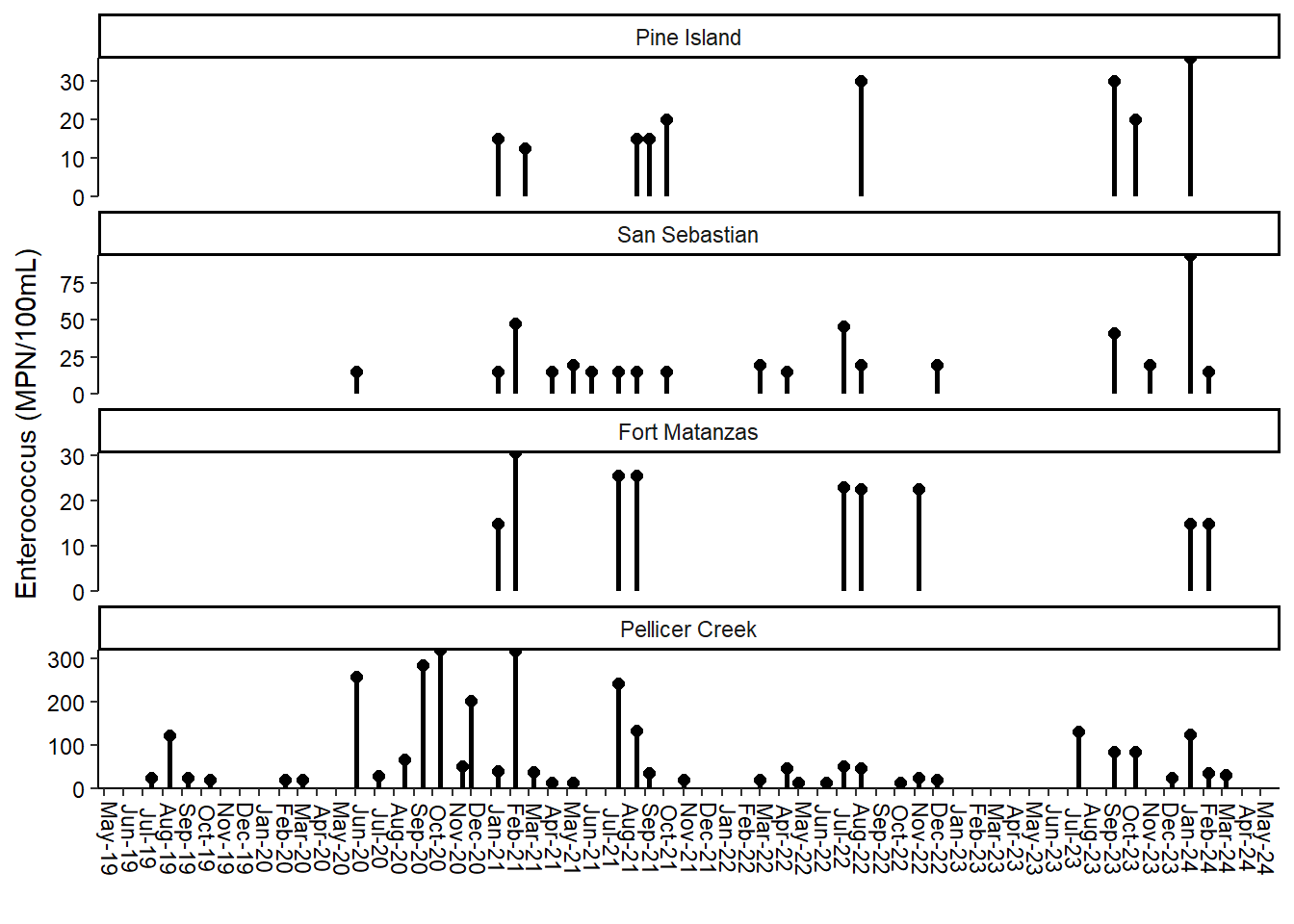7 Other Indicators
Other indicators include dissolved organic carbon (DOC) and bacteria levels (fecal coliform and Enterococcus) that are collected at each station.
The SWMP began analyzing water samples at each station for fecal coliform bacteria in 2013. In 2019, collections for Enterococcus bacteria began and both are now collected at all four stations. Due to overnight shipping requirements, all bacteria samples are qualified by the DEP laboratory as out of hold times. For proper analyses, hold times for these samples are not to exceed 7 hours from collection. Therefore, the SWMP uses this data to show general patterns and trends only.
7.1 Summary
DOC levels fell within historic interquartile ranges in February for all stations except Pine Island which was missing data. Elevated DOC levels were observed in January and March (Figure 7.1).
Bacteria is detected in water samples from Pellicer Creek more often and in higher quantities than the other three stations (Figure 7.2 (a); Figure 7.2 (b)). Fecal coliforms are also often detected at San Sebastian (Figure 7.2 (b)). So far this year, bacteria samples were elevated at all stations in January.





